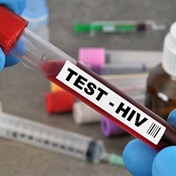Up to 62 percent of HIV-infected patients develop extensive painful neurologic pain extending into the legs that is either due to the disease itself or is a side effect of HIV drug treatment, according to the report in the Journal of Pain and Symptom Management.
Chronic neuropathic pain can markedly impair physical, emotional, and functional health, yet it is often under treated.
While there is evidence that repeat use of low-dose topical capsaicin can provide meaningful relief for a number of painful conditions, HIV-related neuropathy does not appear to be one of them, prior research has shown.
Capsaicin is the ingredient in hot peppers that makes them hot.
How the study was done
Hypothesising that this lack of effectiveness may have been a dose issue, Dr David M. Simpson, from Mount Sinai School of Medicine in New York, and colleagues tested the safety and effectiveness of a high-concentration capsaicin patch (NGX-4010) in 12 HIV-infected patients with moderate-to-severe pain in both feet.
The patch was applied once to affected areas for 60 minutes. The main outcome measure was the percent change in a pain rating scale score from the start of the study through two to 12 weeks after treatment.
Treatment with the patch produced a sustained reduction in pain scores of roughly 40 percent on average over the follow-up period. A treatment response, defined as a 30 percent or greater reduction in pain, was seen in eight patients (67 percent), including four with a 50 percent or greater reduction.
Most patients experienced an increase in pain during the 48 hours after the patch was applied, which resolved in the first week after treatment.
Patch gives long-lasting relief
Except for the expected local pain and redness, "NGX-4010 was tolerated well, and no safety concerns were identified," the investigators report.
"The most important finding is that the high-concentration capsaicin patch produced long-lasting (i.e. at least three months), significant pain relief in HIV-associated peripheral neuropathy with a good safety profile," Simpson said. While encouraging, the results will need to be replicated in controlled trials, he added. "This is an exciting time in research of new treatments for neuropathic pain," such as HIV-related pain, shingles and diabetic neuropathy, "with new drugs on the horizon." – (Reuters Health)
March 2008
Read more:
HIV can hit brain hard
Aids drugs preserve brain




 Publications
Publications
 Partners
Partners










